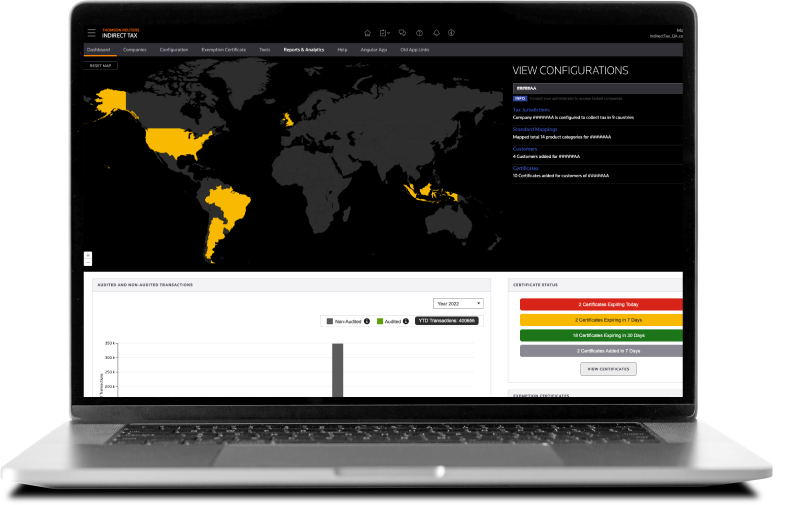Tips for companies to proactively streamline the audit process.
Sales tax audits are laborious, complex, data-intensive events that almost all companies must endure at some point. By the time an audit is triggered, however, it is too late to change the outcome in any meaningful way because the transactions and events under audit have already occurred. Instead, the key to minimizing the risk of an unfavorable sales tax audit is to be fully prepared for the audit before it happens.
Jump to:
| Why is it important to be proactive toward sales tax audits? |
| How can my company prepare for a potential sales tax audit? |
| How can tax technology help when defending an audit? |
| When and how should tax systems be upgraded? |
Why is it important to be proactive toward sales tax audits?
Broadly speaking, proactively preparing for a sales tax audit means implementing a series of best-practices to reduce (if not eliminate) errors in the first place. This may sound like common sense, and it is—but for proactive audit preparation to be effective, a company and its tax department must be willing to prioritize prevention of something that hasn’t happened yet, which can be a hard sell.
There is nothing hypothetical about sales tax audits, however. For most companies, sales tax audits are not a matter of if, but when. Furthermore, audits are time-consuming and expensive.
So, considering the stakes involved, making a company’s sales tax operations and compliance functions audit-ready should be a top priority.
How can my company prepare for a potential sales tax audit?
To prepare for a sales tax audit, it is important to understand what auditors are looking for and why. State auditors, for example, are usually trying to locate revenue they can recover, so they are looking for instances when taxes have either been underpaid or underreported.
The best audit defense is to make sure all taxes have been accurately reported and paid on time. Unfortunately, double-checking every transaction throughout the extensive reach of an audit cycle is too time-consuming for both internal audit teams and auditors themselves.
According to Tracy Davis, Specialist Director – Retail Sector at Thomson Reuters, auditors typically leverage statistical sampling of transactions for the relevant audit cycle rather than reviewing all of a company’s transactions.
“Auditors will often perform statistical sampling of transactions for the specified audit period, and/or target the top X percent of transactions over a certain dollar amount, or use other drivers for their audit sample,” Davis explains.
Auditors may also target periods with higher transaction volumes. “Those in retail or seasonal businesses should not be surprised to see the months with higher transaction volumes be selected under audit,” Davis says. “Think Black Friday and Cyber Monday, November and December.”
Prioritizing preparation as a best practice
If tax teams perform periodic reverse audits on the company’s transactions to detect anomalies, errors, red flags, risks, or areas of concern, they can resolve those issues in advance of external audits. Furthermore, says Davis, an ongoing best practice is to be performing your own reverse audits on a pre-defined schedule, such as quarterly.
“The goal is to identify errors, issues, and potential risks and resolve them immediately, so they do not become an issue under audit,” Davis explains.
Even if an issue can’t be resolved before the audit, being able to isolate the timeframe and set of transactions impacted beforehand means the company can demonstrate to the auditor that the issue is isolated to those specific transactions as opposed to the entire population of transactions under audit. Proactive analysis of transaction data also makes it possible to prepare executives about what might be discovered during an audit and allow them to accrue proper audit reserves.
 |
|
How can tax technology help when defending an audit?
Proactive analysis is difficult without the right technology in place. Indeed, when defending an audit, a robust tax technology platform offers critical capabilities that manual methods simply cannot match.
“Technology can strengthen an audit defense in a multitude of ways,” Davis explains. Of particular use, she says, is tax determination technology that automates the tax calculation and determination process and provides tax teams with line-item, transaction-level details.
For example, when auditors find errors, Davis says, they extrapolate those errors over transactions for the entire audit period, which typically ranges from three to five years. Small errors, when multiplied across the entire population of transactions, can result in large penalties.
But suppose the error only happened once, on a single day. “If you have the right technology in place, you can isolate that error so that when it is identified under audit, you can prove to the auditor that it only happened that specific time with that specific scenario,” Davis explains. “Not only that, but you can also identify the precise time frame of the error and show that it has already been corrected. In an audit, that’s very powerful evidence.”
Automation = accuracy and peace of mind
Automated solutions are helpful because they are more accurate and reliable, which minimizes errors and risk. “Whenever you are using manual processes there is always a higher risk of errors,” Davis says. “Automated solutions reduce those risks, increase accuracy, and provide more consistency and controls.”
A properly supported automated tax solution also ensures that up-to-date tax rates and rules are being applied. Again, says Davis, “Trying to keep up with changing regulatory requirements manually is both time-intensive and prone to errors.”
When and how should tax systems be upgraded?
Companies that have an abundance of manual processes are at a disadvantage during an audit, Davis says.
“It’s not uncommon for internal audit teams to have to manually search and pull online transaction receipts and sales invoices,” Davis says, adding that they often have to “look up and review receipts and invoices individually, one by one, which can be very painful.”
A wide range of tools and technologies
Fortunately, there is a wide range of tools and technologies that can help audit teams prepare for an audit, and these tools can be implemented at any time.
“From a sales tax perspective, there’s not really a bad time to add tools that can help facilitate internal auditing of tax compliance and operations processes,” Davis says. Certain retailers may lock down their systems just before and during the holidays at year end, preventing some tax teams from onboarding new tools during that time. Nevertheless, the best time to start planning is now, she says.
“Tech transformations to a platform like ONESOURCE Indirect Tax Determination will take more time and planning than implementing a tool like Alteryx, which can be done anytime, depending on your internal policies and procedures,” Davis says.
With solutions like these in place, sales tax audits don’t have to be painful experiences.
 |
|












